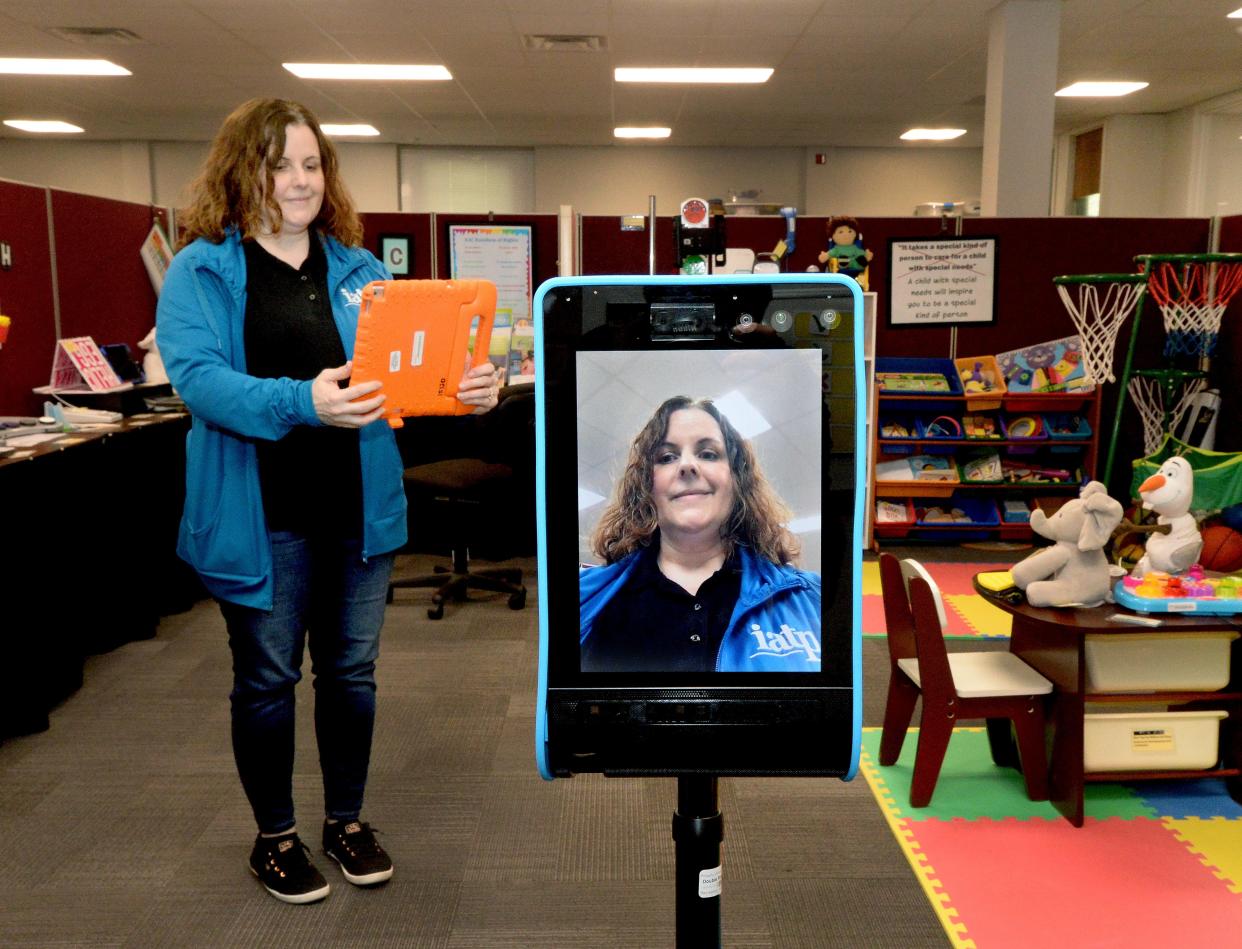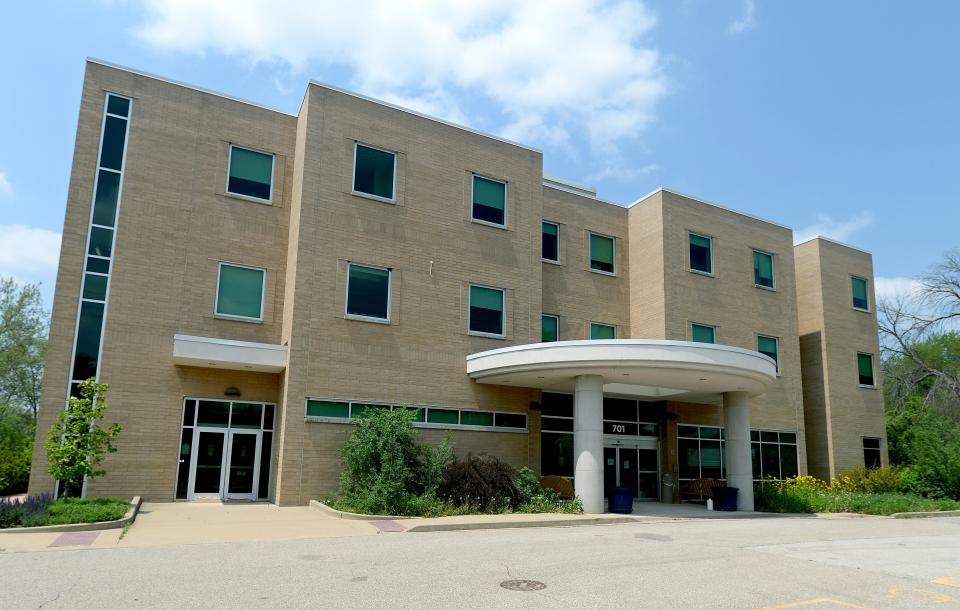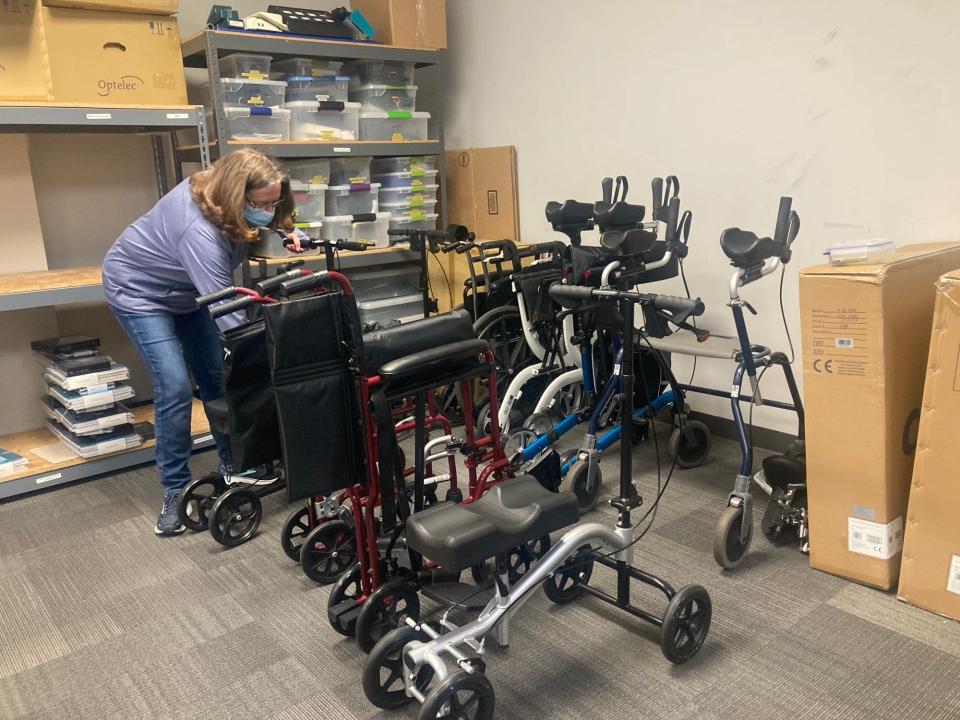Space needs lead Illinois Assistive Technology Program to former Vibra Hospital

Illinois Assistive Technology Program leadership had a plain but forthright answer about why it was moving to the former Vibra Hospital later this summer.
Space.
The 701 N. Walnut St. location just outside of the Mid-Illinois Medical District will allow the statewide nonprofit, which provides a wide range of adaptive technology and services to individuals with disabilities, to nearly triple its size to just over 50,000 square feet.
The move was confirmed last week by IATP executive director Willie Gunther and developer Chris Stone who purchased the building from the Mechanicsburg, Pennsylvania-based Vibra Healthcare late last year. Stone also owns IATP's current digs at 1020 S. Spring St.
A core service IATP is looking to expand, said Gunther, who has been with the agency for nearly three decades, is assistive technology demonstrations. That includes bringing in a SMART home display, she added.
"We'll have a display of what a SMART home for individuals with all types of disabilities would look like, from having an adaptive bedroom, kitchen, living space, laundry room, bathroom, the whole nine yards, down to the front door with a SMART lock," Gunther said. "The Smart technology is something that enables individuals to have more control and empowers them to be more independent and to be able to do more.
"Pairing that with something like Ring, they can see who's at the front door and let that person in on their own."
IATP is looking to add a regular home kitchen to the facility where staff will be teaching independent living skills around cooking, wellness and food preparation, Gunther said.
The idea of the demonstration center, said coordinator Robin Richard, is to show people what kinds of devices can help with whatever they are dealing with.
"It could be a physical disability. It could be something (rehabilitative) from an accident or it could be you're aging, and you need devices to help you stay independent and stay in your home," Richard said. "We can go through and try to look at all of the different things to see what might actually work for them."
IATP's over 1,000 devices, Richard said, address areas of mobility, with wheelchairs, walkers and rollators, to vision aids, like large print magnifiers and magnifiers that voice printed material to dressing aids, grab bars and overhead lifts.
IATP doesn't sell any of the devices, but does loan them out.
The technology can provide some special moments.
A woman, Richard recalled, used one of IATP's self-driving, two-wheeled Double Robotics Telepresence Robot to fulfill her duties as a bridesmaid in a wedding, as she lay in a hospital bed controlling the robot with an iPad. The robot walked down the aisle with the woman's face on a screen.
"They even attached a little bouquet to it," Richard recalled.
A woman who had never seen a picture of her grandchild before brought her cell phone into the office and put it under a magnifier reader.

"She could blow up the picture enough to see her grandchild for the first time," Richard said.
The agency has even created some low-tech, low-cost devices, she said, via a 3D printer.
"We're experiencing a very large expansion," said Jacqueline Pitchford, IATP's chief operating officer. "We're trying to get to a more holistic approach for serving our customers rather than just having certain programs that meet certain needs. We've brought in occupation therapists and occupational therapist assistants, and they will help us cover needs more overall going into people's homes, seeing what they need."
IATP also has a Work Incentive Planning Assistance, a program that assists people navigate their SSI (Supplemental Security Income) and SSDI (social security disability insurance) benefits, Pitchford said.
A Reutilization program at IATP keeps durable medical equipment like hospital beds, bathchairs, wheelchairs and elevated toilet seats out of landfills, said its director, Jane Teeter.
The equipment goes through an industrial sanitizing machine and is checked for minor repairs before it goes to people who need it, Teeter added. Last year, IATP gave out 1,300 pieces of equipment.
Elizabeth Hall, an OT who works in the program, said having the right equipment available is a boon to those people trying to live independently at home.
Keep up with the latest news in your area: Six reasons to download the SJ-R app
"So many people after an injury or accident are already struggling financially," Hall said. "What I used to see in nursing homes or assisted living places where I worked was that (patients) may not get the doctors' orders on time. The equipment hasn't come in and they're already at home, putting them at risk for further injury. Having this program and having us on board is essential to the state and we can really help a lot of families."
"Being able to assess patients and being able to suggest the right equipment for them, having them try different approaches with adaptive equipment in Reuse, all those things are going to keep them as independent as possible."
IATP's original funding dates back to 1989 and was a novel concept then in that it operated outside the parameters of state government. It functions completely on government grants, federal and state, Pitchford said, and does no fundraising.
IATP has collaborative agreements with Illinois Department on Aging, Illinois Department of Human Services, Division of Vocational Rehabilitation, Illinois State Board of Education and Social Security Administration.
The former hospital dates from 2010 when it was then operated by Kindred Healthcare as a long-term acute-care hospital, one of about 400 in the U.S. The sale of Kindred to Vibra Healthcare was approved by its board in 2013.

The 50-bed facility closed permanently in 2019.
In 2020, it attracted the attention of the State of Illinois, and the property was acquired through powers outlined in the governor’s disaster proclamation as a possible place to treat COVID-19 patients, though it was never used for that.
Gunther said she went to Stone about a year ago inquiring about additional space for the agency, that now includes 50 staff members.
The move is expected to take place by Sept. 1.
Contact Steven Spearie: 217-622-1788, sspearie@sj-r.com, twitter.com/@StevenSpearie.
This article originally appeared on State Journal-Register: Illinois Assistive Technology Program to move into old Vibra Hospital

